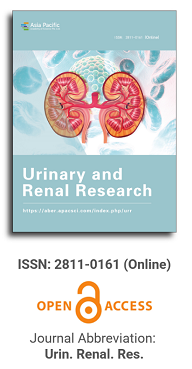
Asia Pacific Academy of Science Pte. Ltd. (APACSCI) specializes in international journal publishing. APACSCI adopts the open access publishing model and provides an important communication bridge for academic groups whose interest fields include engineering, technology, medicine, computer, mathematics, agriculture and forestry, and environment.
Urinary tract infection is considered to be one of the most common infectious diseases in the world. Its pathology is divided into complex urinary tract infection and non complex urinary tract infection. The latter is very common in primary treatment, and its clinical manifestations can be non complex cystitis or non complex pyelonephritis. Uncomplicated urinary tract infections occur in healthy people without a history of functional abnormalities. It mainly affects young women. E. Coli is the most common infectious microorganism. The diagnosis is based on clinical conditions and usually does not need laboratory examination. The management will depend on the etiology.
Urinary tract infection (UTI) is one of the most common infectious diseases, which causes huge economic losses all over the world every year. The term ITU includes the pathology of different anatomical regions: urethritis, cystitis, pyelonephritis and prostatitis; Cystitis is the most common, usually manifested as dysuria, frequent urination and urgency. ITU includes a wide range of clinical manifestations, from simple colonization to septic shock. Intestinal bacteria are the main pathogens causing UTI, among which Escherichia coli is the main pathogen. It is the second largest cause of bacterial infection in the community after respiratory tract infection; The incidence increases with age and gender. For other healthy, sexually active, non pregnant female patients, these forms can be divided into non complex forms; Complications occur in patients with certain risk factors, such as structural or functional urinary tract abnormalities, basic diseases or special populations, such as pregnant women and children. The diagnosis is mainly based on clinic and urine examination is carried out as needed. In most cases, treatment is empirical and outpatient antibiotic treatment.
Urinary tract infections (asymptomatic bacterial urine, cystitis and acute pyelonephritis) are the most common complications of pregnancy. They are caused by the anatomical and physiological changes of pregnant women. Early diagnosis and management are essential to avoid possible maternal and infant sequelae. Diagnosis is done by identifying pathogens through urine culture. The most common microorganism is Escherichia coli. Treatment is carried out under antibiotic coverage, and management can be outpatient or inpatient treatment, as appropriate.
Objective To observe the effect of triiodothyronine (T3) on the expression of transforming growth factor-β1 (TGF-β1), in order to investigate the mechanism of T3 in renal fibrosis. Methods Thirty-six C57/B6 mice were used in this study. The control group (C) included 12 mice, and the others were used to establish diabetic models by injection of streptozotocin (STZ). Then the mice were randomly divided into the diabetes group (DM) and T3 group (T3). The mice were raised for six months. The expression of TGF-β1 was detected by immunohistochemical stainning, image analysis and Western blot. Results Compared with the control group, the expression of TGF-β1 was obvi-ously increased in the diabetes group, and the expression of TGF-β1 in the T3 group was obviously lower than that in the diabetes group. Conclusion T3 reduces the range and process of fibrosis in dia-betic nephropathy by down-regulating expressions of TGF-β1.
.png)
Prof. Wei-Yen Hsu
National Chung Cheng University, Taiwan


 Open Access
Open Access